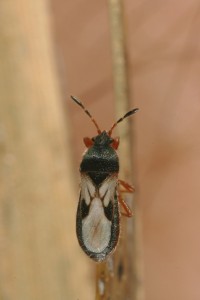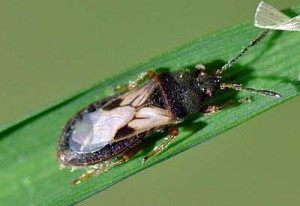The South Florida summer is here, and along with the intense heat and high humidity come chinch bugs. The summer months in South Florida are the peak growing months for grass, trees and shrubs. Your lawn and ornamental plants should be looking their best this time of year because of the full sunshine and increased precipitation. But sometimes, even if it seems you’re doing everything right, you still get some brown spots patched throughout your lawn. It may look like drought spots, but it’s the rainy season! If you live in the South and have St. Augustine grass or zoysia grass, you could be hosting a chinch bug party.
Chinch bugs are a pest common throughout much of the United States. Derived from the Spanish “Chinche,” their name can literally translate to “nuisance.” They can be very damaging to ornamental grasses and plants, and can devastate entire lawns. Though they can be found in many states, they prefer a lot of sunlight and many grasses that are native to Florida, specifically St. Augustine grass. This can make them especially troublesome for Florida home and business owners. For this reason, chinch bugs control is especially important for the health of your lawn.
The first step to chinch bug control is finding out if you have them. The damage they cause looks a lot like drought damage, with dry brown spots appearing throughout the lawn. As their population grows, the spots spread out and will eventually consume the entire yard and neighborhood. The insects themselves are easily recognizable but can be hard to see in grass, so other methods for identification are helpful. An adult chinch bug has a black body with wings that fold flat on its back. Their wings are mostly shiny white with a little bit of black on the middle of the outer edge of each wing, giving the appearance of an “x” on their backs.
A popular do-it-yourself way to identify chinch bugs is the “can method.” Cut both ends off of a tin can, and push one end of the can about an inch into the suspected area of infestation. Fill the can with soapy water, and keep it filled for about ten minutes. Insects in the grass will float to the surface, making it easier to identify them.
An untreated chinch bug infestation can wipe out entire lawns in a matter of weeks. What appears to be a small colony can quickly grow out of control once warm, sunny weather hits. Getting ahead of the problem, and then staying ahead of it, isn’t always easy. Proper identification, maintenance and treatment take time, training and experience. Mistakes along the way can lead to more damage to your lawn and allow the colony to increase its numbers and further damage your grass. If you have growing brown spots in your yard, and watering isn’t solving the problem, there’s a good chance you have a chinch bug colony. If you don’t feel comfortable tackling the infestation yourself, experienced Florida pest control companies can help keep your lawn looking green.
Nozzle Nolen is a member of the U.S. Green Building Council (USGBC). For more information about Nozzle Nolen and its Certified Green Solutions Program, visit www.nozzlenolen.com or call (800) 22-NOLEN.


